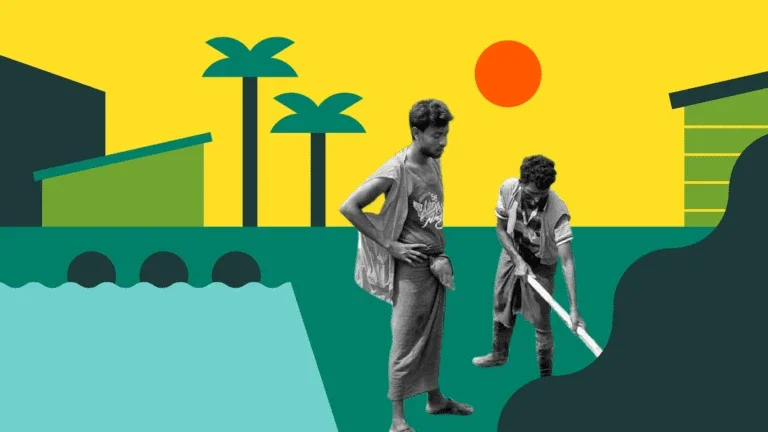Access to safe and secure housing was an immediate issue after Bangladesh’s Cox’s Bazar became the world’s largest refugee settlement over a single month in 2017 with the influx of more than 700,000 Rohingya from Myanmar.
The refugees built makeshift shelters primarily using fragile materials like bamboo, sticks, and low-grade plastic sheeting.
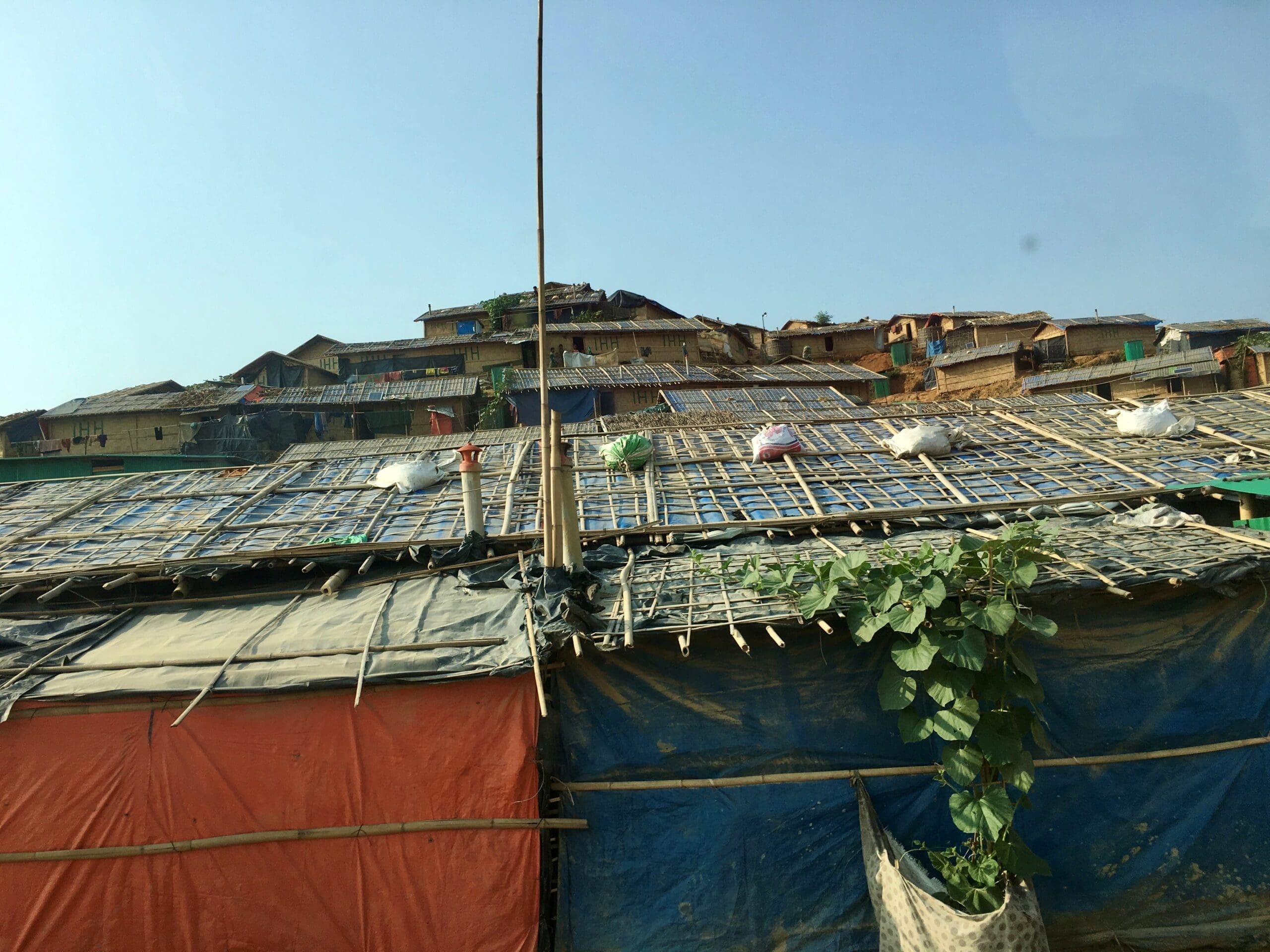
Temporary shelters constructed from tarpaulin and bamboo in Camp 3. (Photo Credit Alex Robinson, The Rockefeller Foundation)
But the shelters are extremely susceptible to damage from the cyclone-level winds, monsoon rains, and invasive pests typical to Cox’s Bazar, require extensive and expensive maintenance and repair every six months, and generate massive amounts of plastic waste. They also provide insufficient protection against extreme temperature fluctuations which can range from 10°C to 40°C.
All this has exacerbated health problems like respiratory illness, skin disease, and heat exhaustion in an already vulnerable population.
As the acute situation turned into a protracted crisis, the need to rethink the emergency shelter design became clear.
The Solution
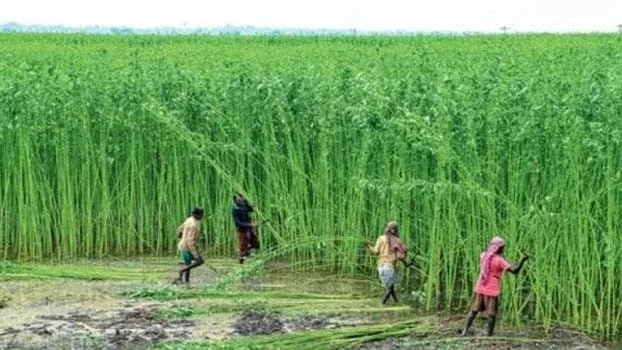
Workers harvest local jute.
Jutin material being manufactured.
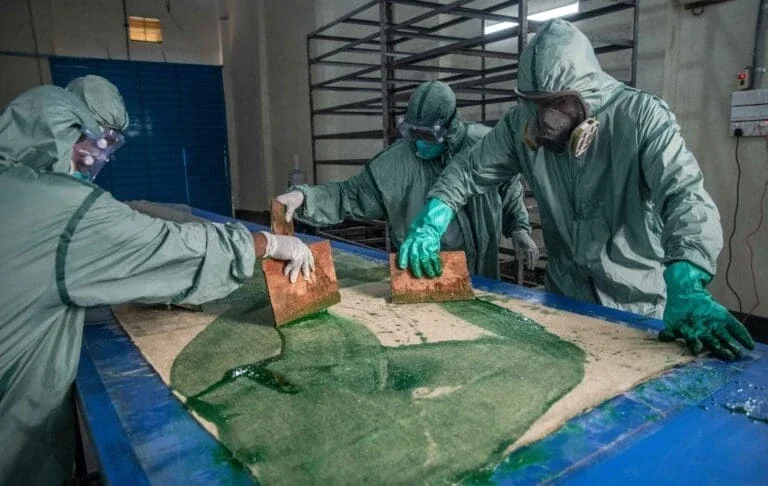
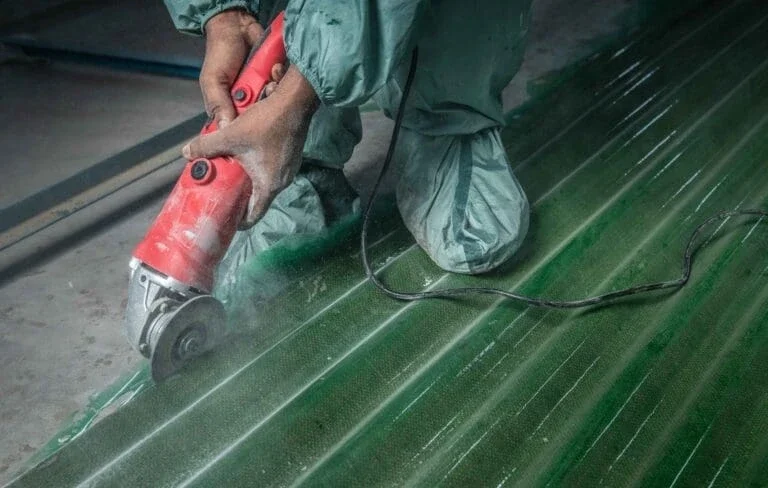
Jutin sheet ready for incorporation into shelter structure.
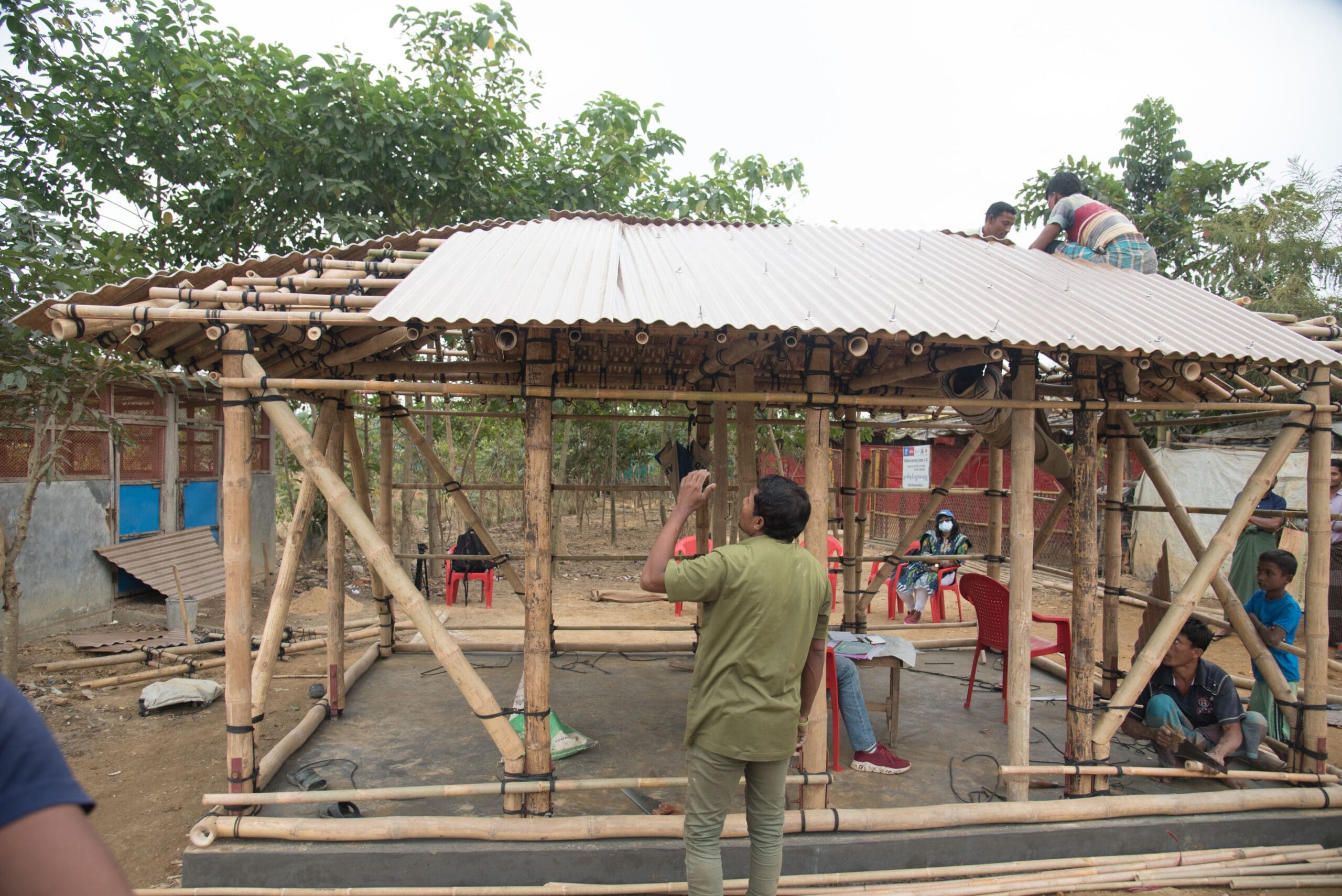
Construction underway for the Jutin housing pilot in Cox’s Bazar. (Photo courtesy of Dr. Jahan)
In searching for an answer, the International Centre for Diarrhoeal Disease Research, Bangladesh (icddr,b), one of the world’s leading global health research institutes, turned to an earlier invention by Bangladeshi scientist Dr. Mubarak Ahmad Khan, known as Jutin. This plant-based material is made from resin and indigenous jute fiber, which is completely biodegradable.
Under the leadership of principal investigator Dr. Farjana Jahan, icddr,b decided to test the benefits of using this material to construct sustainable, eco-friendly housing. With funding from the Islamic Development Bank, they partnered with the nonprofit Caritas International to launch a pilot project in January 2022 to construct six Jutin houses in Cox’s Bazar.
For 12 months, the team collected data on indoor temperature, humidity, light, and heat stress among residents from both the Jutin and existing shelters. They also interviewed inhabitants about their lived experience in the Jutin shelters. Their findings demonstrated that the Jutin structures easily outperformed existing emergency shelters by:
- Increasing comfort: Jutin shelters had significantly lower indoor temperatures compared to tarp shelters, ranging from 1°C cooler in the late summer to 3°C cooler during the rainy season.
- Increasing indoor light: Jutin shelters had a trans-opaque roof that introduced natural daylight into the home, providing 50 times more indoor light compared to existing shelters, and reducing household electricity consumption.
- Reducing heat stress: In line with the wet bulb global temperature index, residents in Jutin shelters were found to spend 63 percent of their total time in low-to-moderate heat risks zones, while residents in tarp shelters spent more than half of their time in high-to-extreme heat risk zones.
- Lowering operation and maintenance costs: Even though Cyclone Mocha delivered powerful winds, monsoon rains, and flooding during piloting, Jutin shelters did not require maintenance, while tarp shelters had to be completely replaced at least once during the 12-month period. “During the monsoon, water did not enter into the house,” said Halima, a Rohingya refugee participating in the pilot. “This was a good experience for us, because in every [other] monsoon, our shelters got ruined, and we had to wait for the replacement kit.”
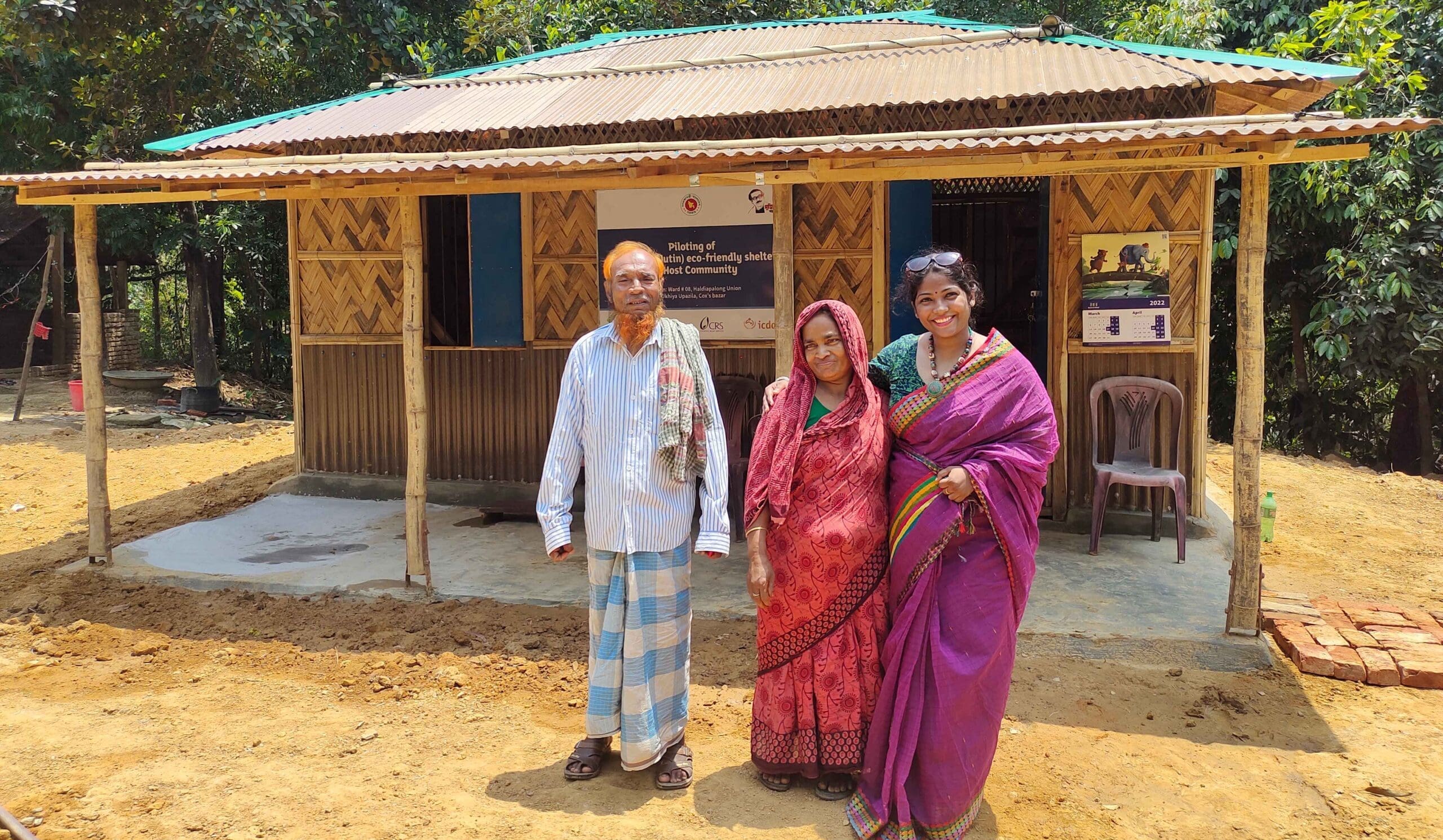
A Rohingya family smiles in front of their Jutin shelter. (Photo courtesy of Dr. Jahan)
Unlike bamboo and tarpaulin, Jutin also is soundproof and secure, which provides peace of mind for residents. “Jutin is very strong, even stronger than the aluminum tin that is available in the market. People can’t peek through doors and windows, doors can be locked, and children can’t sneak in,” noted Khodeza, another pilot participant.
Looking to the Future
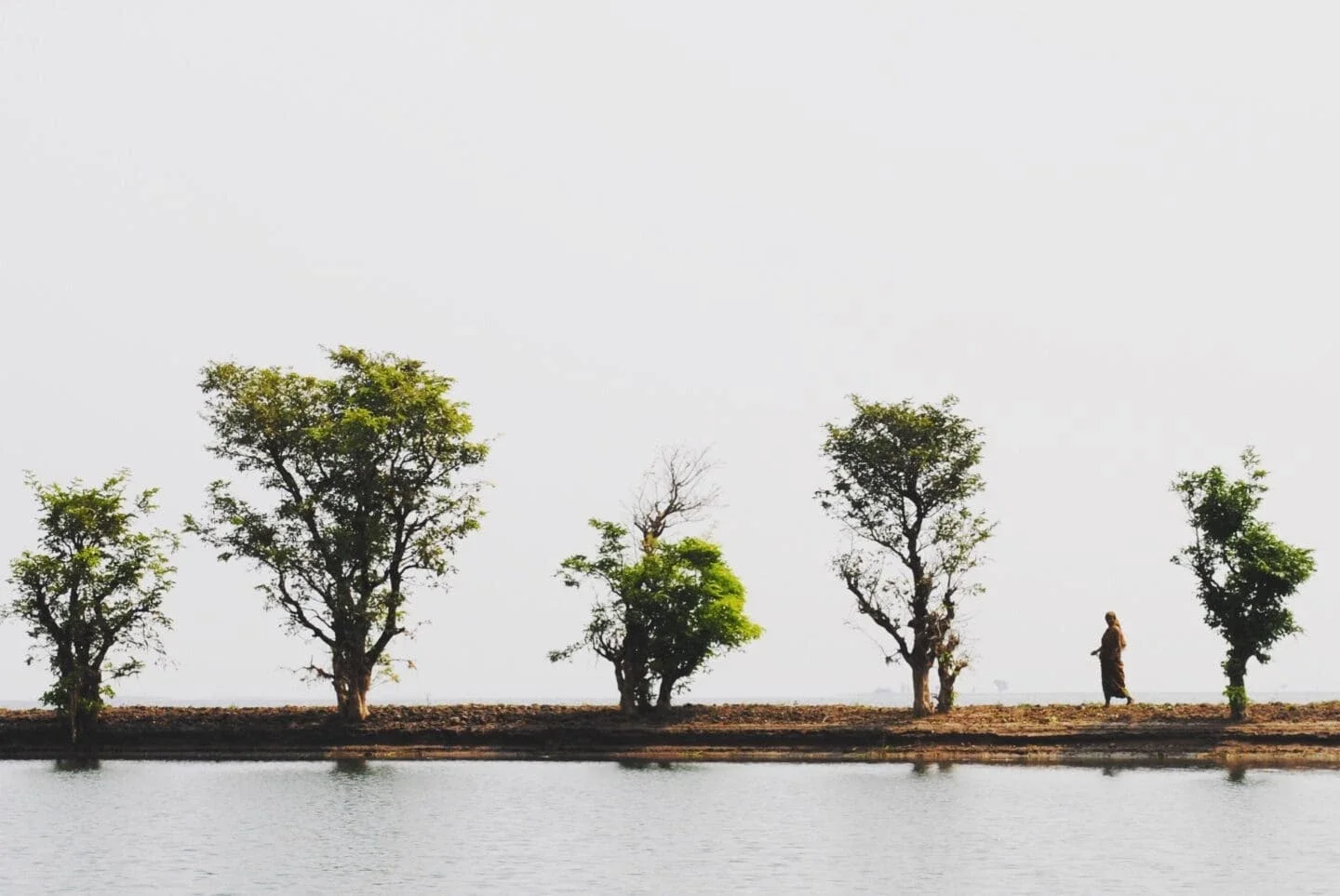 A villager walks through a flooded landscape in the climate-vulnerable southwestern coastal region. (Photo Credit Alex Robinson, Rockefeller Foundation)
A villager walks through a flooded landscape in the climate-vulnerable southwestern coastal region. (Photo Credit Alex Robinson, Rockefeller Foundation)
More than 90 million people in Bangladesh are estimated to live in areas that face increasing heat stress, flooding, and riverbank erosion, all of which have cross-cutting impacts on food security, livelihoods, water quality, and shelter. These impacts will induce significant climate displacement; by 2050, Bangladesh could have more than 20 million internal climate migrants, accounting for nearly half of all projected climate migrants in South Asia.
Populations in the southwestern coastal region have been identified by the Bangladeshi government as being some of the most climate vulnerable, and many researchers believe that these populations are already beginning to migrate inland from their ancestral homes. Climate-resilient housing is an urgent challenge.
The Rockefeller Foundation has provided funding to icddr,b through its Climate Exploration Fund to focus on this region for the Jutin pilot’s second phase. Beginning this June, the team will construct 10 houses in the region, each with its own kitchen, toilet, and handwashing station. They will then evaluate the houses in terms of temperature, humidity, and light. They will also measure self-reported health outcomes, including respiratory symptoms, diarrhea, malaria, and mental health.
These results will feed into The Rockefeller Foundation-supported Climate & Health Innovation Hub, which icddr,b recently launched in partnership with the Non-Communicable Disease Control Program of the Directorate General of Health Services in Bangladesh. The Hub is dedicated to pioneering locally led climate adaptation efforts, with a focus on health priorities. It will serve as a central nexus in Bangladesh for cross-sectoral coordination and information-sharing on climate adaptive strategies.
The Jutin housing pilot has already generated significant interest from government agencies and development partners beyond Bangladesh, and Dr. Jahan is optimistic about replicating this solution elsewhere. “If the second phase is successful and generates positive evidence, we foresee a huge possibility to scale up this Jute-based housing model in other climatic zones around the globe, especially in Asia and Africa,” she said. “This will create meaningful opportunities for South-South collaboration in tackling climate change.”
